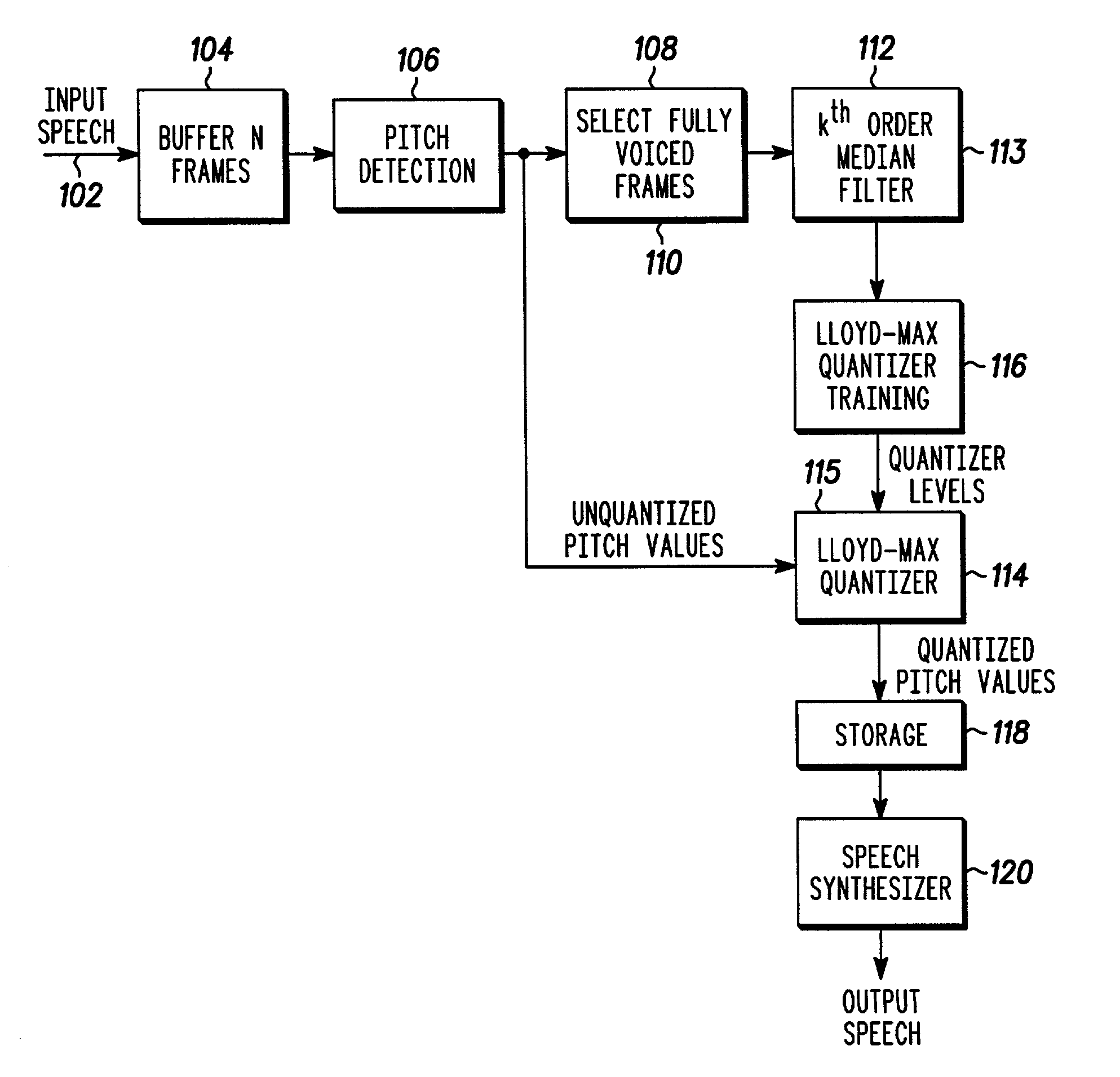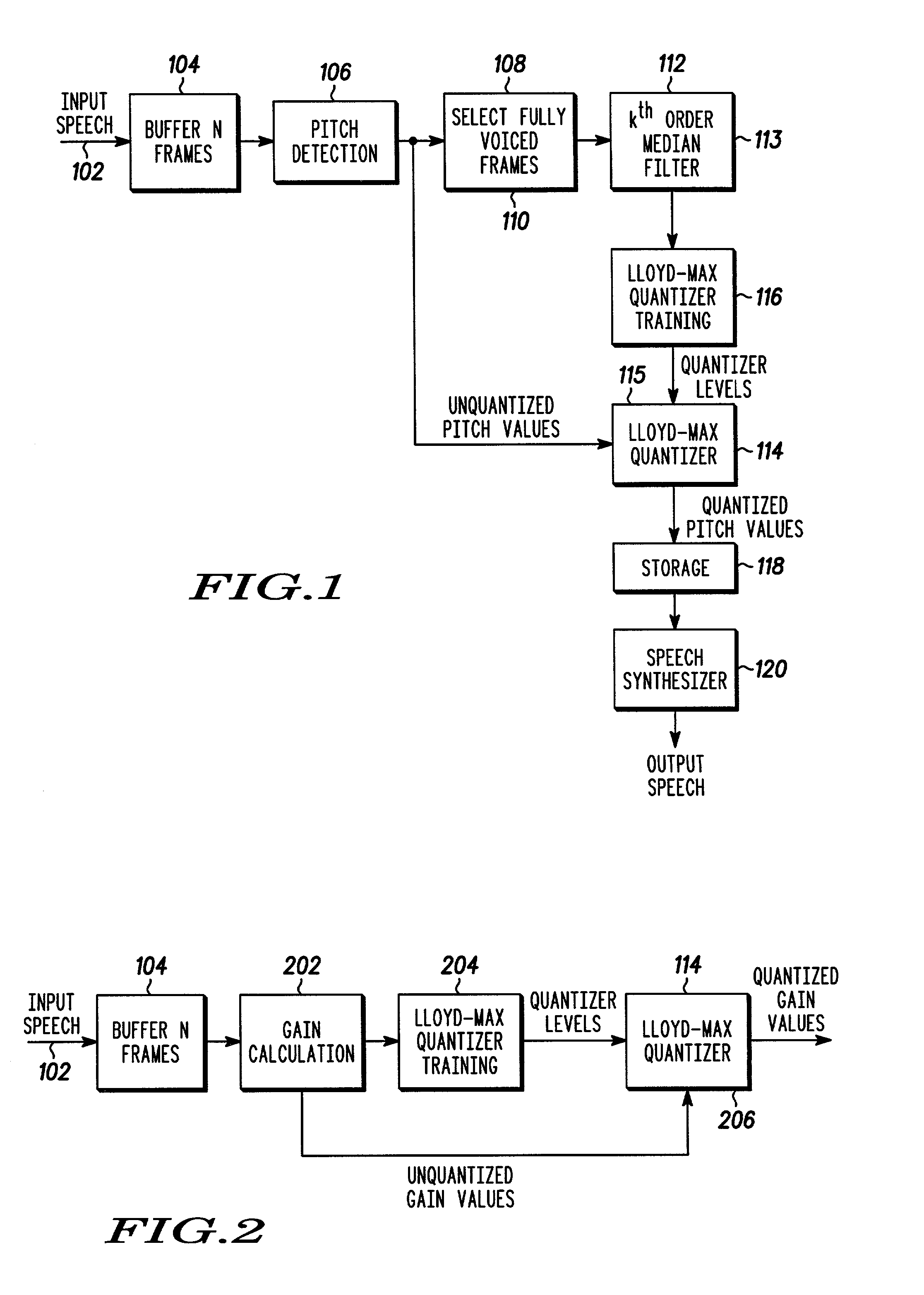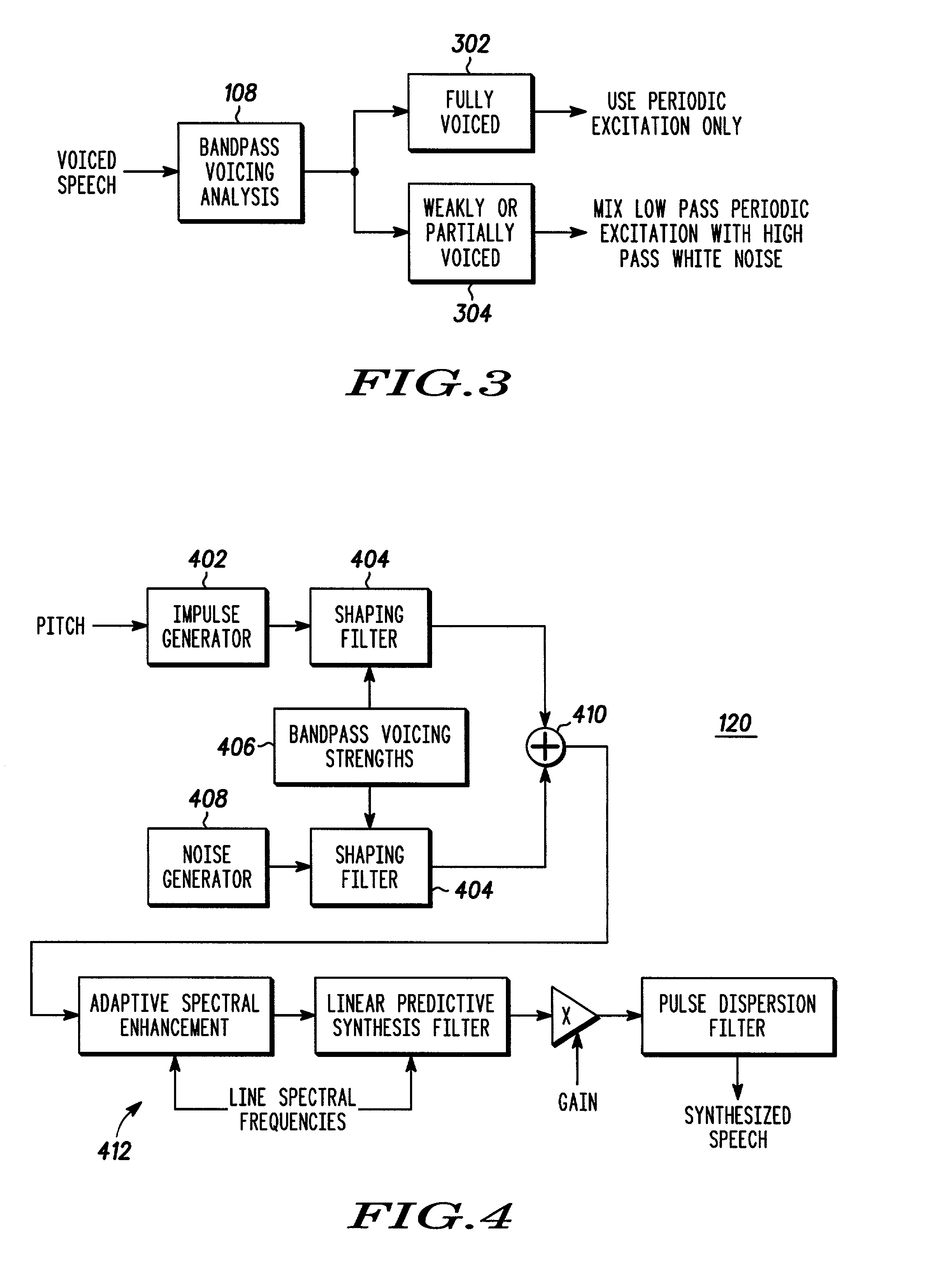Method and apparatus for speech coding using training and quantizing
a speech coding and training technology, applied in the field of speech coding systems, can solve the problems of inability to exploit perceptual criteria for a given speech quality to further improve data compression efficiency, neither buffering delays nor robustness against transmission errors are of any consequence,
- Summary
- Abstract
- Description
- Claims
- Application Information
AI Technical Summary
Benefits of technology
Problems solved by technology
Method used
Image
Examples
example 1
[0041]The bit allocation and frame format of MELPS is shown in Table 1.
[0042]
TABLE 1MELPS bit allocation.Average blockquantizationBits per voicedBits per unvoicedoverhead perParametersframeframeframe in bitsVoiced / Unvoiced1 1—DecisionGain3 3 1.6LPC Coefficients2525—Pitch2—0.56Bandpass Voicing1——Bits per 22.5 ms32292.16frame
[0043]Each unvoiced frame consumes 31.16 bits whereas each voiced frame uses 33.16. In addition, there are 108 quantizer coefficients (28 pitch quantizer levels and 80 gain quantizer levels) of overhead. Every 22.5 milliseconds, the coder decides whether the input speech is voiced or not. If the input speech is voiced, a voiced frame with the format shown in the first column of Table 1 is output. The first bit of a voiced frame is always set. If the input speech is unvoiced, an unvoiced frame with the format shown in the second column of Table 1 is output is output. The first bit of an unvoiced frame is always reset. The quantizer coefficients frame is produced ev...
example 2
[0044]The above technique was incorporated into the improved MELPS model, in accordance with the present invention. The implementation relied on the same pitch detection and voicing determination algorithms used in this government standard speech coder, FS1016 MELP. The coefficient values are shown in Table 2. For the below parameters, an average of 4.44 bits per voiced frame is saved in the present invention over that of the standard FS1016 MELP codec.
[0045]
TABLE 2Coefficient values used in block pitch quantizer implementation.Unquantized Pitch Values (bits)7Frame Length / (ms)22.5SuperBlock Size N (frames)50Median Filter Order k5Lloyd-Max Quantizer Order m4
[0046]In order to assess the speech quality impact of the improved codec of the present invention, an A / B (pairwise) listening test with eight sentence pairs uttered by two male and two female speakers was performed. The reference codec was FS1016 MELP. For 75% of sentence pairs, the listeners were unable to tell the difference b...
PUM
 Login to View More
Login to View More Abstract
Description
Claims
Application Information
 Login to View More
Login to View More - R&D
- Intellectual Property
- Life Sciences
- Materials
- Tech Scout
- Unparalleled Data Quality
- Higher Quality Content
- 60% Fewer Hallucinations
Browse by: Latest US Patents, China's latest patents, Technical Efficacy Thesaurus, Application Domain, Technology Topic, Popular Technical Reports.
© 2025 PatSnap. All rights reserved.Legal|Privacy policy|Modern Slavery Act Transparency Statement|Sitemap|About US| Contact US: help@patsnap.com



